 The U.S. Government's C130 plane carrying relief goods from Manila arrives in Davao City on December 11, 2011, to support the Philippine Government’s Typhoon Bopha relief efforts.
USAID/GEM
The U.S. Government's C130 plane carrying relief goods from Manila arrives in Davao City on December 11, 2011, to support the Philippine Government’s Typhoon Bopha relief efforts.
USAID/GEM
 The U.S. Government's C130 plane carrying relief goods from Manila arrives in Davao City on December 11, 2011, to support the Philippine Government’s Typhoon Bopha relief efforts.
USAID/GEM
The U.S. Government's C130 plane carrying relief goods from Manila arrives in Davao City on December 11, 2011, to support the Philippine Government’s Typhoon Bopha relief efforts.
USAID/GEM
Polio-stricken Jeneth Cervantes and her family cringed as their house was blown away by Typhoon Bopha (locally known as Pablo) in Cateel, Davao Oriental, on the east coast of Mindanao.
The roof flew off and the wooden pillars collapsed despite the rope that Cervantes’ husband tied in an attempt to reinforce the structure. As the storm raged for six hours, Cervantes, 33, tried to show courage even though she was worried about the safety of her children.
“It happened so fast. I was afraid but pretended to be strong because I didn’t want my children to see me scared. We were not able to save anything except the clothes we were wearing.”
On December 4, 2012, Typhoon Bopha made landfall with maximum sustained winds of around 155 miles per hour. Strong winds damaged houses, roads, bridges, school buildings, churches, covered courts and other public and private infrastructure. The storm claimed over 1,200 lives, leaving more than 2,900 injured and 800 missing.
The coastal municipalities of Baganga, Boston and Cateel were the most devastated. In Davao Oriental province, nearly all structures were destroyed. Damages were estimated to reach at least $312 million, including the loss of more than 20,000 houses.
Cervantes’ husband carried her on his back as the family walked two hours in search of a safer place. “Along the way, we saw the devastation caused by the typhoon to our place. Lives were lost, many other houses destroyed, and coconut trees fell,” she said. The family now lives in an emergency shelter built through the joint efforts of the Philippine Government and donor countries such as the United States.
After Towns Flattened, a Timely Response
Timely disaster response that supports the needs of vulnerable people like Cervantes requires strong and multi-layered partnerships on the ground. USAID, which leads the U.S. Government’s humanitarian response to disasters overseas, partnered with the U.S. Department of Defense (DoD), in-country government agencies like the Department of Social Welfare and Development (DSWD), and NGOs to provide emergency response within a few hours after Typhoon Bopha struck eastern Mindanao.
Between Dec. 9 and 16, USAID and DoD transported approximately 14,700 family food packs, 30 metric tons of rice, 94 metric tons of high-energy biscuits, 3,400 pieces of plastic sheeting, 80 collapsible water containers, and other relief commodities from the Manila warehouse of DSWD. Some relief items reached typhoon-affected coastal areas in Davao Oriental within one day of being airlifted from Manila. The commodities were provided by a number of organizations, including the Red Cross.
In collaboration with the Armed Forces of the Philippines, DoD, through the Joint Special Operations Task Force-Philippines (JSOTF-P), conducted aerial surveys covering nearly 40,000 square kilometers, providing search and rescue, and aerial assessments of disaster-affected provinces in Mindanao.
“Responding to a disaster of such magnitude elicited the best from people, including USAID staff and JSOTF-P who worked together to save and protect Filipinos from further harm,” said USAID/Philippines Mission Director Gloria D. Steele. “Our work to assist affected communities continues.”
Linking Development and Defense
Disaster responses may provide the most visible and high-profile partnership between development and defense in the island nation. It is part of the so-called “3D”—diplomacy, development and defense—approach championed by the U.S. Embassy in Manila.
In fact, USAID and DoD have coordinated their humanitarian responses to four typhoons between 2009 and 2012. USAID’s collaboration with DoD started in 2002 in Mindanao.
“Both organizations have benefited, and continue to benefit, from cooperative efforts in the development of the southern Philippines. Each has resources and capabilities that are mutually supportive and complement the whole-of-USG approach to fostering peace, security and prosperity in the conflict-affected southern Philippines,” Steele said.
The JSOTF-P, with its constant presence in the conflict-affected areas of Mindanao, provides a ground-level U.S. perspective, which both organizations take into account in designing, implementing and assessing interventions in these areas. USAID and JSOTF-P have worked on several initiatives in Mindanao covering education, health, energy and environment, economic development and governance, and humanitarian assistance. (See USAID-DoD Partnerships sidebar.)
“Our partnership with USAID, and their access and network of NGO partners, is where we are able to make long-term impacts in the Philippines,” said JSOTF-P Deputy Commander, U.S. Navy Capt. Roger Meek.
The relationship between USAID and DoD has been instrumental in disaster recovery and risk mitigation. DoD recognizes that their disaster response efforts are short-term and should be focused on immediate life-saving activities.
“This partnership has grown far beyond infrastructure development over the past decade, and truly blossomed into a partnership on programs in support of more effective development strategies,” said Meek.
Relief to Development
Disasters can easily wipe out development gains and expose underprivileged people to greater adversity.
“As one of the most disaster-prone countries in the world, the Philippines incurs enormous human and economic costs from natural disasters each year. These calamities cost the country an average of 1 to 2 percent of GDP annually and sometimes much higher,” said Steele.
In 2009, the losses from just two typhoons that hit Metro Manila (Typhoons Ketsana and Parma) were estimated at 2.7 percent of GDP.
“Despite these disasters, Filipinos still manage to find a way to rise above these challenges, demonstrating their extraordinary courage and resilience,” added Steele. “This is why USAID, together with other U.S. Government agencies, is continuing to work with our local counterparts to support disaster-affected communities to bounce back, rebuild and persevere, as well as come up with long-term solutions to lessen the impact of these calamities.
“Such partnerships will give victims of natural disasters in the Philippines, such as Jeneth Cervantes, the assurance that help is on the way when needed and hope that recovery and rebuilding are possible as they move forward with their lives.”
Staff of USAID/Philippines contributed to this article.

USAID-DoD Partnerships
Education
- USAID coordinates with partners such as McGraw-Hill Publishing House to provide free books, delivered by JSOTF-P, to schools in Mindanao that are inaccessible due to conflict and other circumstances.
- In partnership with Petron Foundation, USAID and JSOTF-P constructed 10 classrooms in Basilan and Sulu equipped with teacher and student furniture, blackboards, toilets and fans for ventilation.
Health
- USAID-JSOTF-P collaboration in Medical Civic Action Programs (MEDCAPS) increases access to basic health services.
- Health missions provide mothers with antenatal care, immunizations and vitamin A supplementation for children, and information for parents and caregivers on maternal and newborn care and family planning.
- JSOTF-P and health officials provide public health services in remote and conflict areas to implement USAID’s Sustainable Health Improvements through Empowerment and Local Development (SHIELD) program in the Autonomous Region in Muslim Mindanao.
Energy and Environment
- USAID and JSOTF-P field activities in Basilan and Sulu to identify and implement priority water supply projects through USAID’s Building Climate Change Resilience in Water Stressed Communities.
Economic Development and Governance
- USAID and JSOTF-P partnership provides information on job-skills training and economic initiatives to conflict-affected populations with high unemployment.







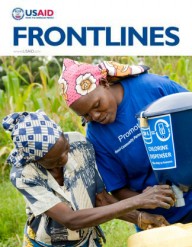

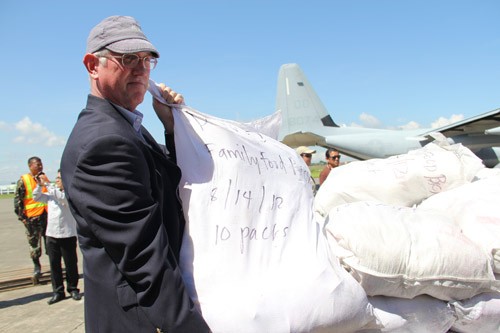


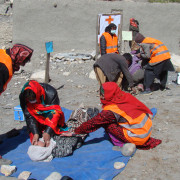
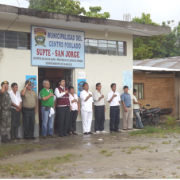
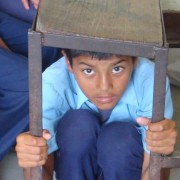
Comment
Make a general inquiry or suggest an improvement.